Japanese Design Archive Survey
DESIGN ARCHIVE
Designers & Creators
Sotaro Miyagi
Product Designer
Interview 01: 6 May 2021, 14:00 - 15:30
Mrs.Nobuko Miyagi
Interview 02: 13 May 2021, 13:30 - 14:30
23 August 2021, 16:00-17:00
Ms. Mirei Takahashi
PROFILE
Profile
Sotaro Miyagi
Product Designer
1951 Born in Tokyo, Japan
1974 Graduated from Chiba University, Department of Industrial Design
1974-1988 Worked at Hamano Institute Co.
1988 Established Miyagi Design Office
2011 Died
Member of the G-Mark Product Selection Committee (1992-1995), Part-time Lecturer at the Department of Design Engineering, Faculty of Engineering, Chiba University (1998-2005), Part-time Lecturer at the Department of Mechanical Design Engineering, Faculty of Engineering, Shonan Institute of Technology (2004-2010), Part-time Lecturer at the Department of Design Engineering, Faculty of Engineering, Chiba Institute of Technology (2007-2010), and lecturer at the Graduate School of System Design, Hosei University (2007-2010).
Member of Japan Design Consultant Association
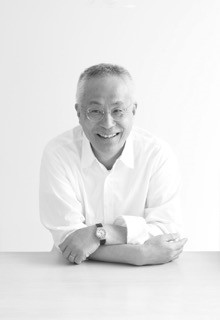
Description
Overview
Sotaro Miyagi's uniqueness as a designer lies in his ability to uncover the true needs of his clients and provide the best answers, from graphics to CI and spatial design, with a focus on products.
He is more of a director who can also draw than a designer, an attitude that Miyagi learned at Hamano Institute (Hamaken), where he spent 15 years. During Miyagi's time at Hamaken in the 1970s and 1980s, the design world was made up of in-house designers in corporate design departments and freelance designers who hung their shingle. Hamaken was an organisation made up of a diverse range of specialists in architecture, graphics, products, editorial and legal work, and was a design firm that handled everything from single product design to brand development and commercial building concept planning. It was a place to practice new ways of working and relationships that went beyond the teacher-pupil relationship of designers.
Since establishing Miyagi Design Office, he has been able to move freely between the positions of designer and director, building up a wide network of contacts and making the most of them to achieve work on a scale that would have been impossible for a one-man firm such as ASKUL, Sanyo Denki and Tokyu Real Estate. In today's digital age, it is commonplace for a design firm with dozens of people to undertake large-scale projects involving systems and software, but Miyagi was working alone to implement a new way of working that led to the design firms of today. In this sense, Miyagi's work foreshadowed the changing nature of design work and its role. This time we spoke to Mrs. Nobuko and Ms. Mirei Takahashi, who is working on the Miyagi archive.
Masterpiece
Representative works
Camera 'Fujica HD-1' Fuji Photo Film (1979) in collaboration with Kazuo Okunari
Lighting equipment "Bio Light", Obunsha (1986)
CI, ASKUL logo mark, etc. Plus / ASKUL (1992-1997)
Air Purifier "AirRefire" Matsushita Electric (now Panasonic) (1997)
Office Furniture "PC Desk System" ASKUL (1998-2000)
Head Office Office Direction "ASKUL" ASKUL (2000-2001)
soap storage "Tsun Tsun" h-concept (2004) in collaboration with Takahashi Mirei
cooking equipment "all round bowls" Cherry Terrace (2004)
Stationery "Flat Stapler Pita Hit" Plus (2010)
1Glass "Palmhouse Glass FLEUR" Cherry Terrace (2010)
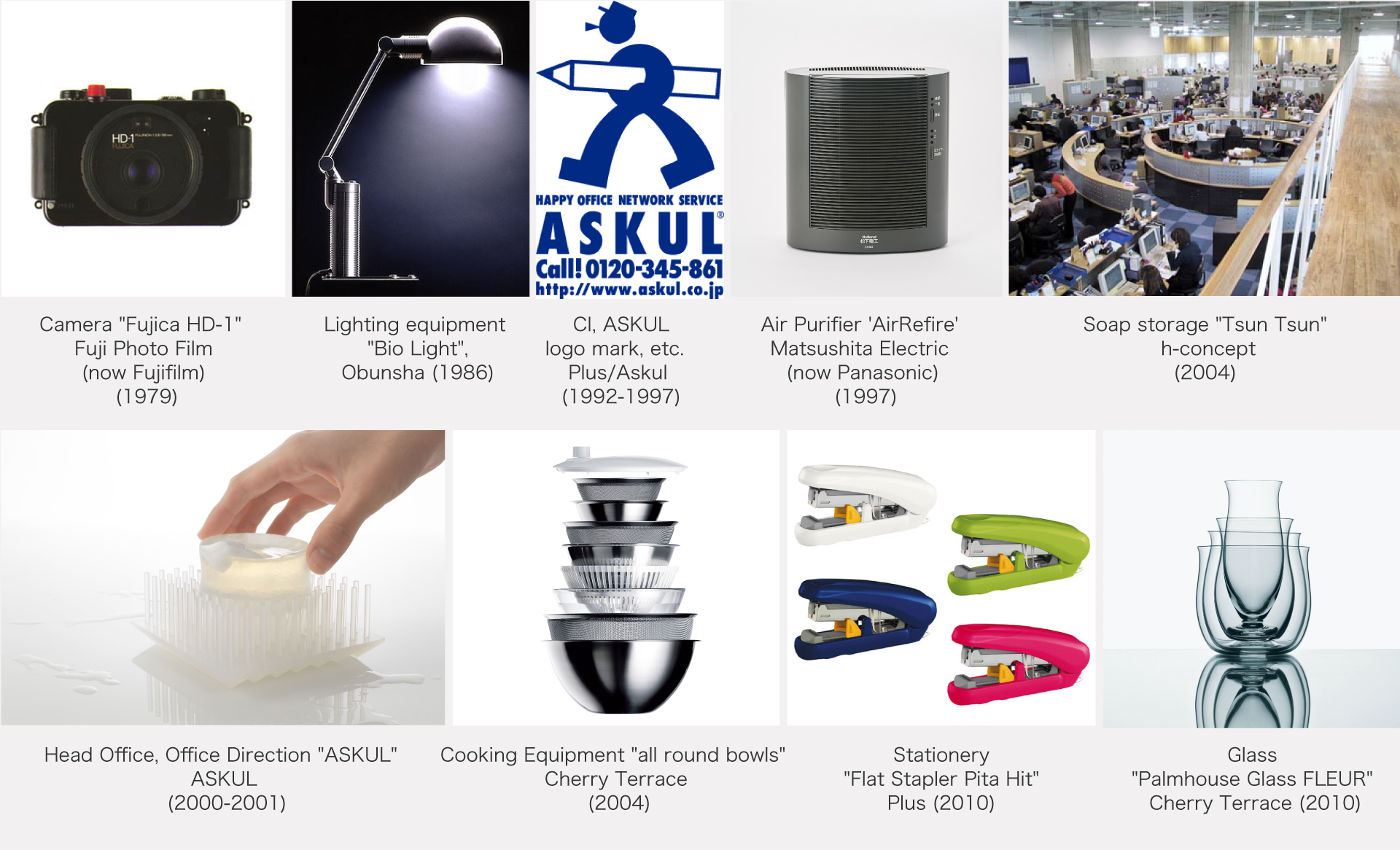
Interview 1
Interview 01: 6 May 2021, 14:00 - 15:30
Place: Miyagi's home
Interviewee: Mrs. Nobuko Miyagi
Interviewer: Yasuko Seki
Writing: Yasuko Seki
Interview 01 : Mrs.Nobuko Miyagi
What is the point of preserving "things" in turbulent times?
Designer Sotaro Miyagi
― We were very surprised to learn of Sotaro Miyagi's sudden death at the young age of 60. Your office must have been overwhelmed by the situation.
Miyagi When we found out that he was ill, there was nothing we could do. It wasn't a sudden loss of energy and we gradually worked our way through. Some clients told him that the best medicine was to keep working and offered him new work, and I was grateful that the companies he consulted with did not terminate his work.
― Mr. Miyagi worked on a wide range of projects including product planning, product design, CI and branding. He also had a staff, how did you cope with the activities and structure of the office?
Miyagi The office was effectively a one-man operation, just Miyagi and Akira Hirano, a long-time part-timer. Mr.Hirano was an aspiring artist, not a designer, but he could also design, and he kept a good distance from Miyagi. When I closed the office, he stayed with us until the end.
― Judging by the amount of work Miyagi did, I thought there would be four or five staff in the office. How did he actually manage to do such a wide range of work?
Miyagi Well, he've worked for big companies on everything from products to brands and business plans, so it's not surprising that people think that. But basically he was a one-man office, working with the right people in the right places, depending on the nature and scale of the work. The teamwork approach may have been something he learnt at Hamaken, where he worked for many years. Even after he set up his own business, he kept in close contact with former Hamaken members and worked with them.
― When Mr. Miyagi was here, Hamaken was a diverse group of talents, led by Yasuhiro Hamano and Takao Kitayama, who produced cultural and commercial facilities such as Tokyu Hands, FROM-1st (Aoyama) and Axis (Roppongi), branded companies and products, developed businesses and products, and planned publications and exhibitions.
Miyagi At Hamaken, Miyagi was involved in a variety of creations, mainly product and spatial design. He gained a lot of things, but especially treasured relationships, which I still have today. Our current house was built in collaboration with the architect Tadao Takaichi, whom we have known since Hamaken , with his office on the lower floor and us on the upper floor. Mr. and Mrs. Takaichi were close to us during Miyagi's illness, which was mentally reassuring.
― My impression of Mr. Miyagi was that he had a charm that attracted people to him.
Miyagi That's right. Miyagi was surrounded by talented people from all walks of life and of all ages, who supported him both in public and private life. I think that's why he has been able to do so much work almost single-handedly in the 23 short years since he started his own business, while also being a “G-Mark” judge and teaching at universities.
― You say that the way of his work has been influenced by Hamaken, but what else?
Miyagi I think it's the idea of lifestyle. We have moved several times, but in 1998, even though we still had debts from our home in Tokyo (Setagaya), we stumbled upon a plot of land we liked in Karuizawa and built a second house. To be honest, I was apprehensive. However, at that time, with the spread of mobile phones and the internet, it was becoming possible to work from anywhere at any time, and Miyagi spent the summer months and every weekend in Karuizawa, practicing a lifestyle of moving back and forth between Tokyo and Karuizawa. His special feeling of lifestyle was influenced by Hamaken.
― Yes, it was. Yasuhiro Hamano, the president of Hamaken, was the embodiment of the new lifestyle. In an interview with Mr. Miyagi in the catalogue of the exhibition " Traces of Post-war Japanese Design 1953-2005: The Challenge from Chiba" (2006), he said: "At Hamaken, the basis was how we should live our lives, not marketing. There was a concept. The idea that design alone was no good without a concept was very helpful to me afterwards." "We needed to change the mindset of the sellers that selling in large quantities was good and that rapid growth was good. It was not a one-size-fits-all approach, and it was okay to think differently. What we also wanted to do was to show people that these products were not good.”
Miyagi Thank you.
― What was your most his memorable work?
Miyagi He worked for Sanyo Denki Japan, a manufacturer of cooling fans and other components, with whom I had the longest relationship, from the foundation of the firm until Miyagi's death, doing a wide range of design and development work, including IC, product and interior design. Then
Miyagi For 365 days, he was a man who devoted everything to design. He had a notepad everywhere, both in the office and at home, and would often jot down things that came to mind or that he had to reply to. It was said that he was a quick returner, and his communication was usually immediate.
Works and materials left behind
― After your sudden death and the closure of your office, what did you do with your works, documents and drawings?
Miyagi To be honest, I thought it would be better to keep only the actual products and to destroy the materials. However, thanks to the advice of Hitoshi Mori, I did not throw them away. Mr. Mori worked for many years as a curator at the Matsudo-City Board of Education, and later taught at Kanazawa College of Art, where he was also the director of the Yanagi Sori Design Memorial. The exhibition "Traces of Post-war Japanese Design 1953-2005" was organised by Mori when he was a curator at Matsudo City. The exhibition looked at post-war Japanese design through the activities of graduates of the Chiba University Design Department, which has produced many outstanding designers, and featured around 400 works ranging from cosmetics packaging to automobile and urban design. A catalogue of the exhibition was also compiled, featuring Miyagi's work and interviews.
Mr. Hayashi said, "Although I never had a chance to talk to Mr. Miyagi before his death," but after he passed away, he came to visit us and said, "Don't throw them away. He said, "Don't throw them away, you have to keep them", and he helped us to find a place to transfer the works and materials. He also tried Chiba University, my alma mater, but they didn't take them, so now I have 70 cardboard boxes and panels at home.
― What's in them?
Miyagi The actual products, sketches and drawings. Normally we should have checked the contents while packing, but there was too little time between the time we found out about the illness and the closure of the office. Mr.Hirano put together the paper-based materials and my friends packed the actual products in cardboard boxes. Anyway, it was all I could do to get the things in the office back to my house.
― It must have been very difficult. What else was left behind?
Miyagi He had a collection of books, but I gave them away, so there is very little left now. There were also some files that Miyagi himself had been sorting through little by little since around 2009. These include a huge number of photographs of architecture, interiors and townscapes taken on his travels. Whenever Miyagi returned from abroad, he would hold a slide show in his office and organize a lively party with many friends and colleagues, which we called "bar MIYAGI". Those friends helped me to organize the materials.
― That was the virtue of Mr. Miyagi. Now you are opening the boxes and sorting out the materials, what exactly are you doing?
Miyagi After some time has passed and things have settled down, various people have come together and volunteered to open the boxes at home one by one, check the contents and continue to produce data. Mr. Mori sorted out the handwritten drawings and other documents with the staff of the Matsudo-City Board of Education. In parallel, a group of volunteers led by Ms. Mirei Takahashi has been taking photos of the commercialised objects in the boxes, as well as drawings and documents related to them by their smart phones, using, and numbering them, and then using Excel to create data on the product names, ages and sizes. Ms.Takahashi wrote texts on design and design-related topics, after graduating from the Domus Academy in Italy . And after returning to Japan, she was introduced to Miyagi through an acquaintance and has collaborated with him on several projects. She has been working with us on several projects, interrupted by the Corona disaster. Ms. Takahashi will tell you more about this project.
― I also heard that you have an exhibition coming up.
Miyagi Yes. The exhibition will be held at the Setagaya Art Museum in autumn 2022 and I are currently working with the curator.
― Do you and Ms.Takahashi decide on the direction of his archives?
Miyagi I was in charge of accounting and other chores in his office, but I wasn't involved in design, so without Mori’s advice I would have thrown away all the materials except for the products. So, I owe a lot to Mr.Mori and Ms.Takahashi.
― This year, 2021, will be the 10th anniversary of Mr. Miyagi's death.
Miyagi When we closed the office, we had a farewell party with everyone. At that time, Jun Nakamichi, a photographer from Nakasa & Partners, volunteered to take some beautiful photos. We are thinking of editing the photos and the interviews that the volunteers did in Miyagi during his illness, and making a small booklet to distribute to the people who helped us.
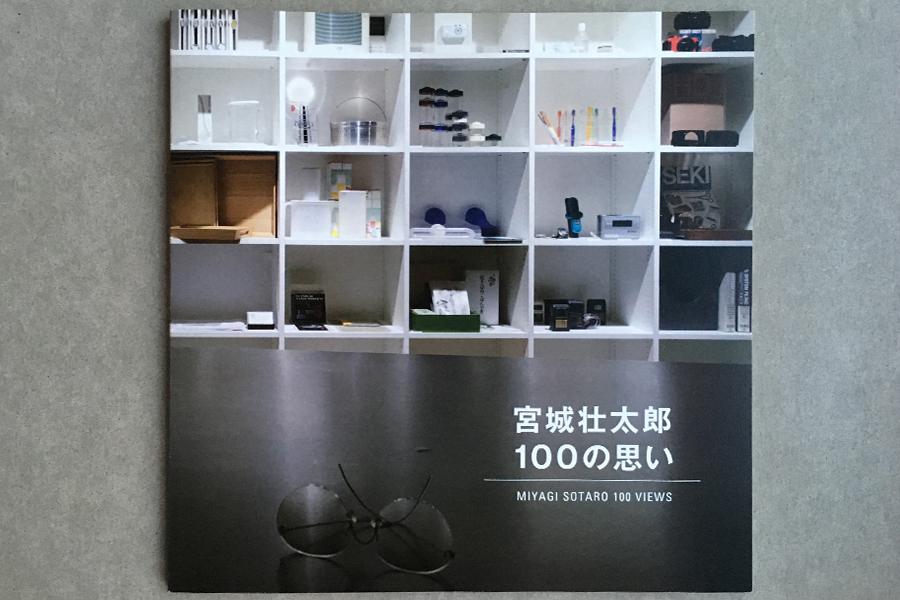
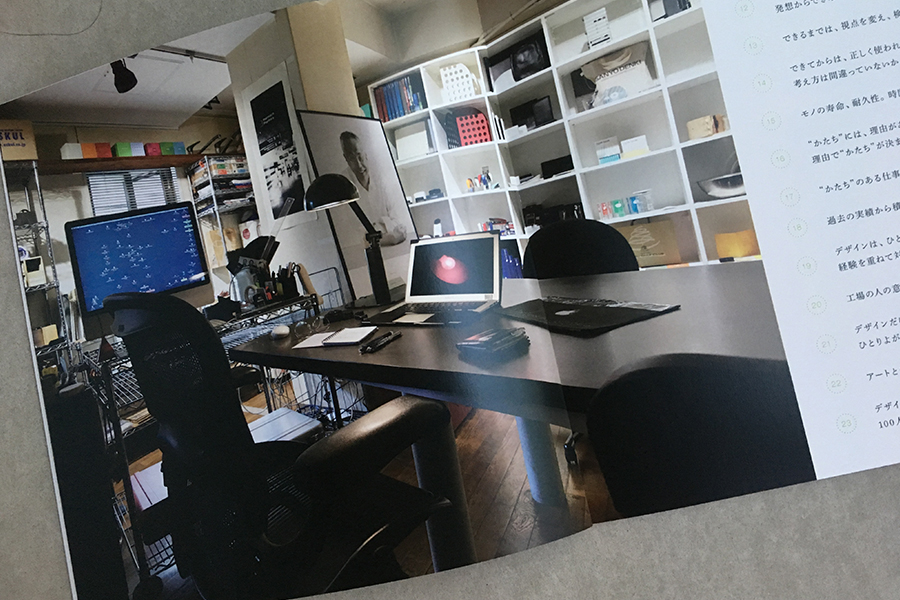
Booklet completed in autumn 2021.
― That sounds like a wonderful idea. Ten years after his death, what do you feel about the storage and organisation of your work and materials?
Miyagi I don't think Miyagi was very particular about his archives, he was a very clean person.
― But you were organising your work, weren't you?
Miyagi He was only 60, and I think he intended to continue working. I think he started organising because his office had become too small and he felt he needed to clear it out to mark his 60th birthday.
In the last ten years, with the help of many people, we have been gradually organising our things and converting them into data, but we don't have any children, so to be honest, I am worried about what will happen to them after I die. It is difficult to leave everything behind, especially as things are so bulky, and it would be reassuring to know that the manufacturer is keeping it for us. Either way, we want to decide where these things go and hope that we can pass on at least the actual product and its documentation. In product design in particular, Miyagi was concerned not only with beauty, but also with having a reason for "the way it is", and we hope to be able to preserve these ideas and workmanship.
― It's really hard for all the designers and their families to keep their work at home. I think they manage to keep their wives and children, but they don't want to impose on their grandchildren.
Miyagi Besides, things deteriorate over time. The Fujica HD-1, a camera he designed when he was at Hamaken, has rubber parts in the shutter that have deteriorated but are now irreplaceable. Product storage has its own problems, doesn't it? In fact, society and technology are changing a lot, for example, the demand for cameras is decreasing due to the spread of smartphones, and cameras themselves may disappear. It makes me seriously wonder if there is any point in leaving "things" behind in times like these. But if it should be preserved, it should be in a meaningful way.
― Thank you very much.
Interview 2
Interview 02: 13 May 2021, 13:30 - 14:30
23 August 2021, 16:00-17:00
Method: Remote interview
Interviewee: Ms. Mirei Takahashi
Interviewer: Yasuko Seki
Writing: Yasuko Seki
Interview 02 : Ms. Mirei Takahashi
I want to record the "existence" of Sotaro Miyagi,
the designer, and the time he lived.
How did you meet Mr. Miyagi?
― Please tell us how you met Sotaro Miyagi.
Takahashi After graduating from the Domus Academy in Milan in 2001 and returning to Japan, I met Mr. Miyagi for the first time through my work at Cherry Terrace, a company that sells kitchenware and tableware. Later on, I rented a room in Tokyo and the owner was Ms.Megumi Mori, a former senior of Mr. Miyagi's at the Hamano Institute, so he approached me and we collaborated on the design of "TsunTsun", a soap box for h concept in 2002. I also started to help with research and conceptualisation.
― The Miyagi Design Office was almost a one-person office, and you worked on projects in a networked way. It's common now, but I think 20 years ago it was very advanced. Mr. Miyagi is a product designer himself, but since he came from Hamaken, he was also able to do concept work and business planning.
Takahashi Rather than just taking orders and designing, Mr. Miyagi would work on projects with various people and the resulting designs would be created. I think a typical example of this is his work for ASKUL. Cherry Terrace project I worked on was not just about the design of the product, it was also about having dinner with the owner's family and sharing time with them. From these relaxed conversations, he began to ask fundamental questions such as what the philosophy of the company was, what kind of product and communication was needed, and what design should be. He started with the fundamental questions: what is the philosophy of the company, what kind of products and communication do they need, what should design be like? Because of this, I was connected with people from different genres and backgrounds.
― How did you work with Mr. Miyagi? For example, "Tsun Tsun"?
Takahashi Mr. Miyagi and Mr. Hidemi Nagoya, the founder of H Concept, agreed on a rough direction for "Tsun Tsun": to reuse the rubber waste from the manufacturing process. When it came to the design stage, Mr. Miyagi approached me, saying that it would be important to have a woman's point of view, as it was a soap box. We didn't decide on any particular division of work, but worked together on the design, sharing ideas and working under Mr. Miyagi's direction. The prototype was made through trial and error at the Miyagi Design Office with Mr. Hirano.
― What kind of designer was Mr. Miyagi to you?
Takahashi What I felt while working with him on the project was that he was very flexible and stubborn at the same time. This attitude was the same for designers of different generations and for clients. He would sometimes use strong language to get his concepts and designs through, but I think this was because he had the confidence and backing for his ideas and proposals. He was not the type of person who pursued authorship, but rather he pursued design as the best answer to the needs of the times and the company.
The current state of the Miyagi’s archive
― Now, I would like to ask you about the main topic, the Miyagi’s archive. I heard that Ms. Takahashi is organizing Mr. Miyagi's materials.
Takahashi His death in March 2011 was too sudden. Not only Nobuko but also the people around her couldn't sort out their feelings, so they packed a huge amount of works and materials in cardboard boxes and moved them to her house in order to close the office. After a while, everyone naturally gathered at his home, and "bar MIYAGI", which Mr. Miyagi used to hold in his office, was revived as a meeting where Nobuko's home-cooked food was served in a different place. Over time, however, the number of participants gradually decreased, and in 2017, I think it was, I asked them if she would like to open the boxes, check the contents and compile a list.
― So that's how the work started.
Takahashi We opened the boxes and numbered the products, mock-ups, drawings and documents up to 500. We took photos of them with our smartphones and made data of basic information such as product name, age, manufacturer, and size.
― Normally you start with a rough classification of the data in chronological order or by project, did you take this into account?
Takahashi At the moment we do numbers in the order in which the boxes are opened. In the beginning, we did it twice a month, then we slowed down to once a month, and before Corona, a few of us continued to do it, although not regularly. In terms of work, at first it was a simple process of taking things out of the box, making notes on sticky notes, filling in an Excel format and putting them back in the box, but recently there have been many cases where it is difficult to make decisions, so it is easier to proceed with a small group.
― Nobuko told me that you give priority to commercialized products.
Takahashi Yes. For example, "Bio Light", a lighting fixture from Hamaken era, an air purifier from Matsushita Electric(now Panasonic), all kinds of staplers from Plus, a set of kitchen bowls from Cherry Terrace, etc. These include the actual products, design drawings, sketches, presentation boards, and mock-ups for photography. There are currently about 70 boxes, which are stored separately in several places in the home.
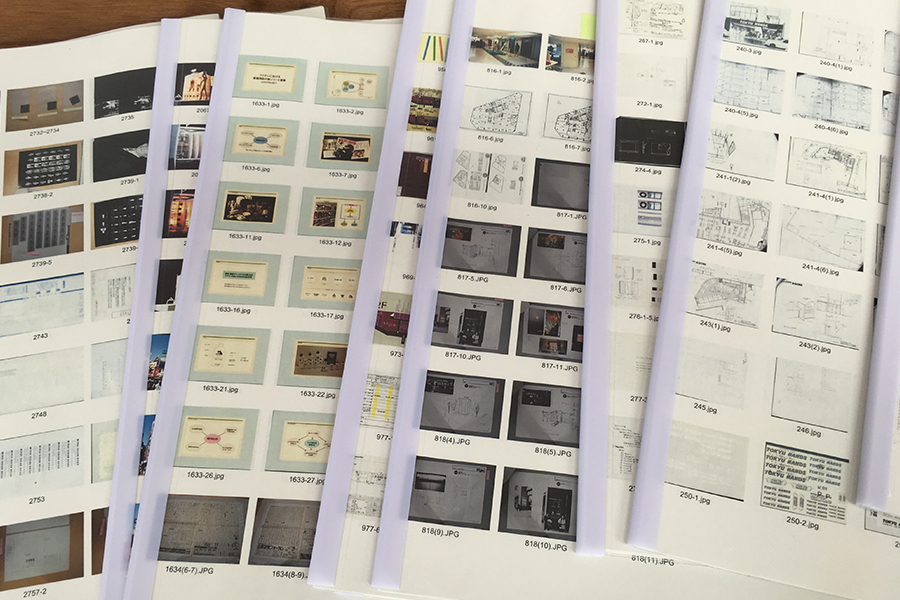
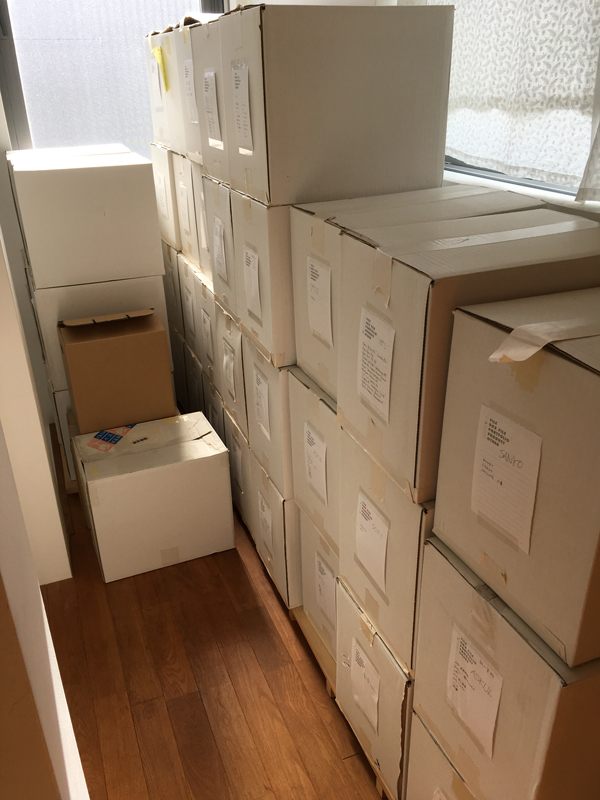
Data in Excel and some 70 boxes stored at home
― Nobuko was wondering what to do with them.
Takahashi That's true. I think I will have to decide at some point whether I can continue to keep them, whether I will have to dispose of them, or whether I should look for a place to store them.
― Still, it is wonderful that the volunteers have been able to make it this far.
Takahashi The archive is still incomplete, but I think the reason we were able to make it this far with volunteers was due above all to the personality of Mr. Miyagi and his sudden death.
― He was loved by everyone, wasn't he?
Takahashi Even before he died, there were times when new projects spontaneously arose from people who had gathered around him. Some of them went ahead without Mr. Miyagi's knowledge, but he never felt uncomfortable about it. He was generous with his relationships, and I think that's why people naturally came together.
― I heard that you have other plans besides the material archive.
Takahashi I'd like to finish the archive in 2021, the tenth anniversary of his death, and I've sorted out the number 500, but work has slowed down due to the effects of the Corona disaster. On the other hand, I have come to think that I would like to record the "existence" of the designer Sotaro Miyagi and the period in which he lived, in addition to the archive of objects. For example, I would like to convey the "facts" about the background and process of the birth of a groundbreaking project like ASKUL, and the interaction with clients. It occurred to me that one way to do this would be to put it all in writing. At the moment I'm working on unravelling the project over time, going back to his work at Hamaken, and at the same time interviewing the people who worked with Mr. Miyagi on each project. I am also delighted to have introduced Nobuko to the curator of the Setagaya Art Museum, who is a senior colleague from my university days, and they are now planning an exhibition of Miyagi's work.
― I think that your text will be a wonderful record. As an archive, a record of a person's thoughts and actions is just as important as works and drawings. As long as the person himself has not left any written or audio records, the only way to get to know him is through interviews with his family, staff and others. Through this process, the humanity and timelessness of the person will be brought to light.
Takahashi It's encouraging to hear that. It's been ten years since Mr. Miyagi passed away, and there are no deadlines like there are for articles or exhibitions. It's not even possible to interview him in person, so I'm glad I had this opportunity to keep motivated and keep going.
― Thank you very much.
Where to find Sotaro Miyagi's design archive
Contact details
Miyagi Design Office http://www.kt.rim.or.jp/~miyagi/

